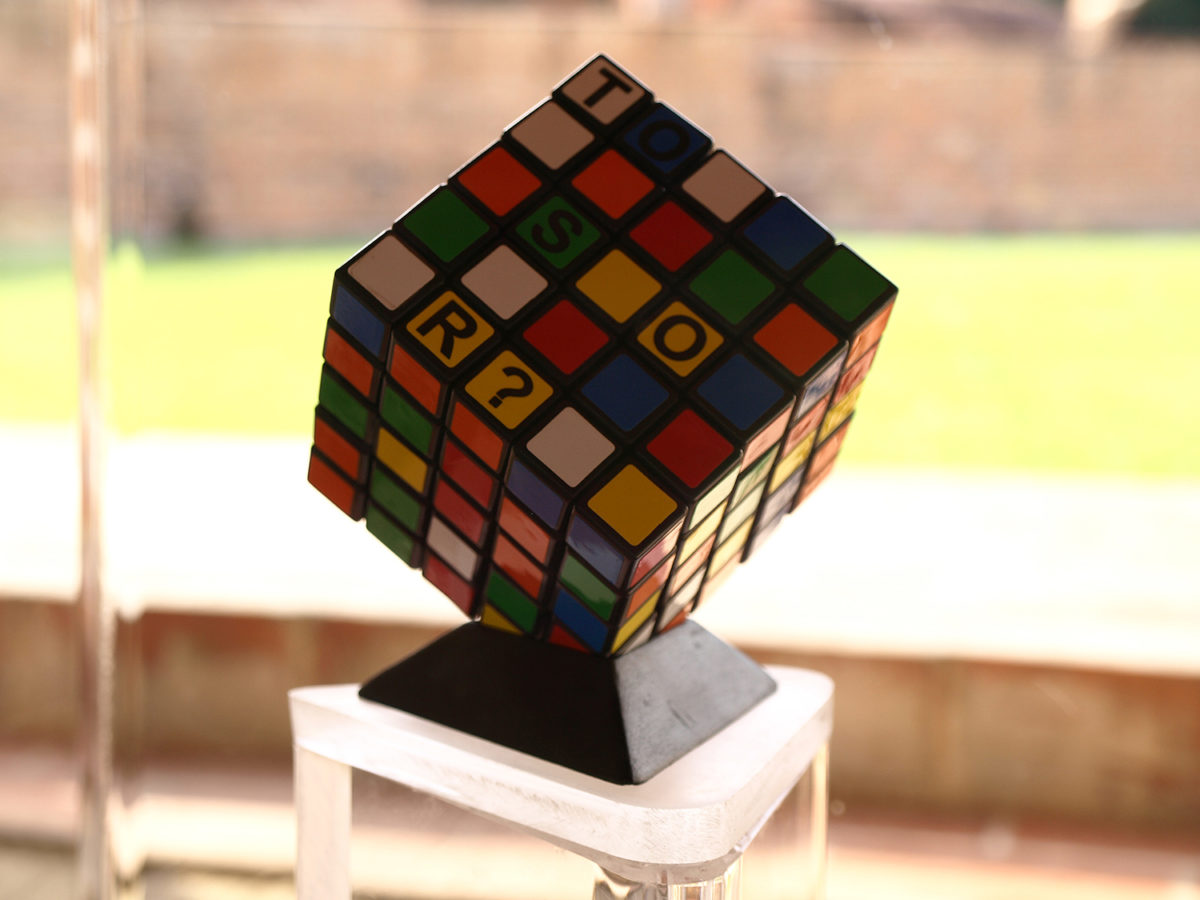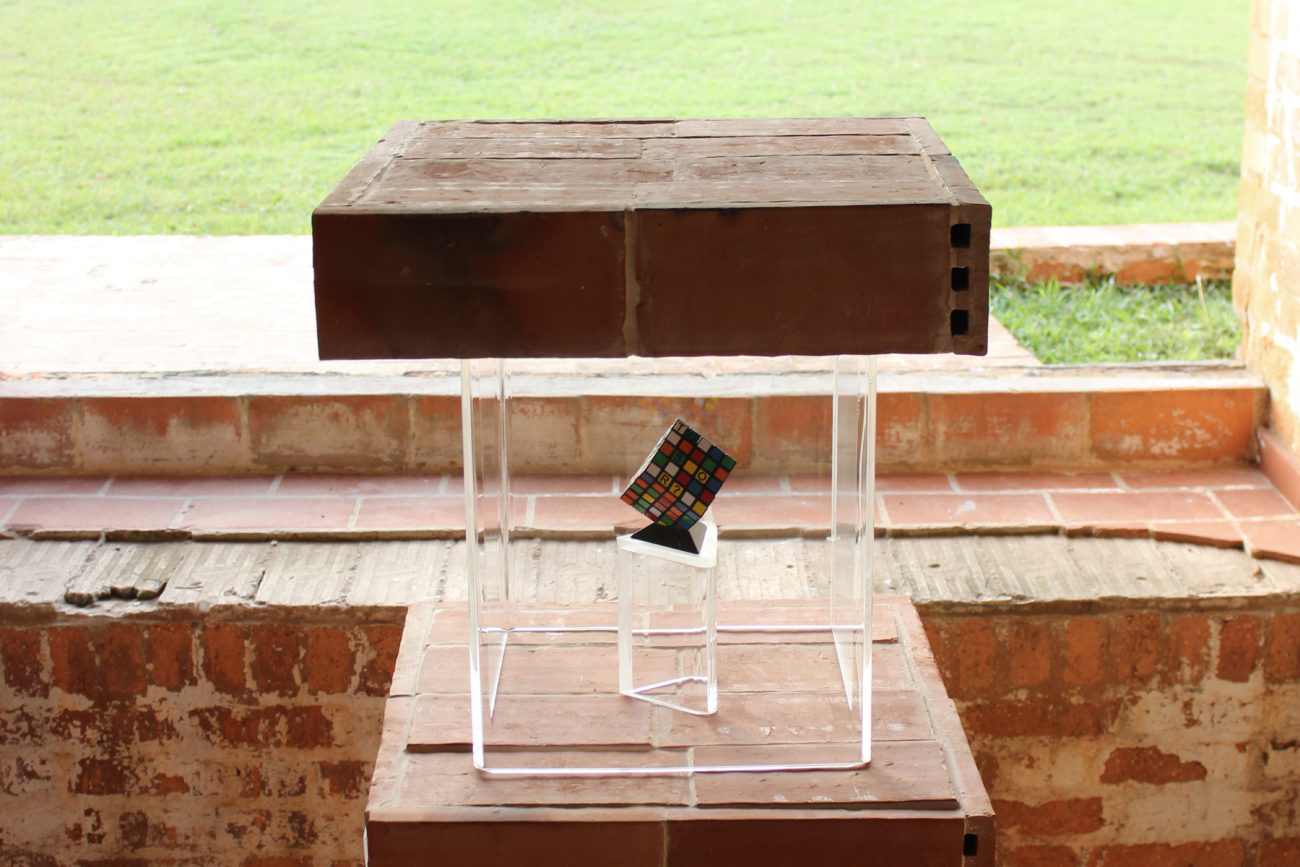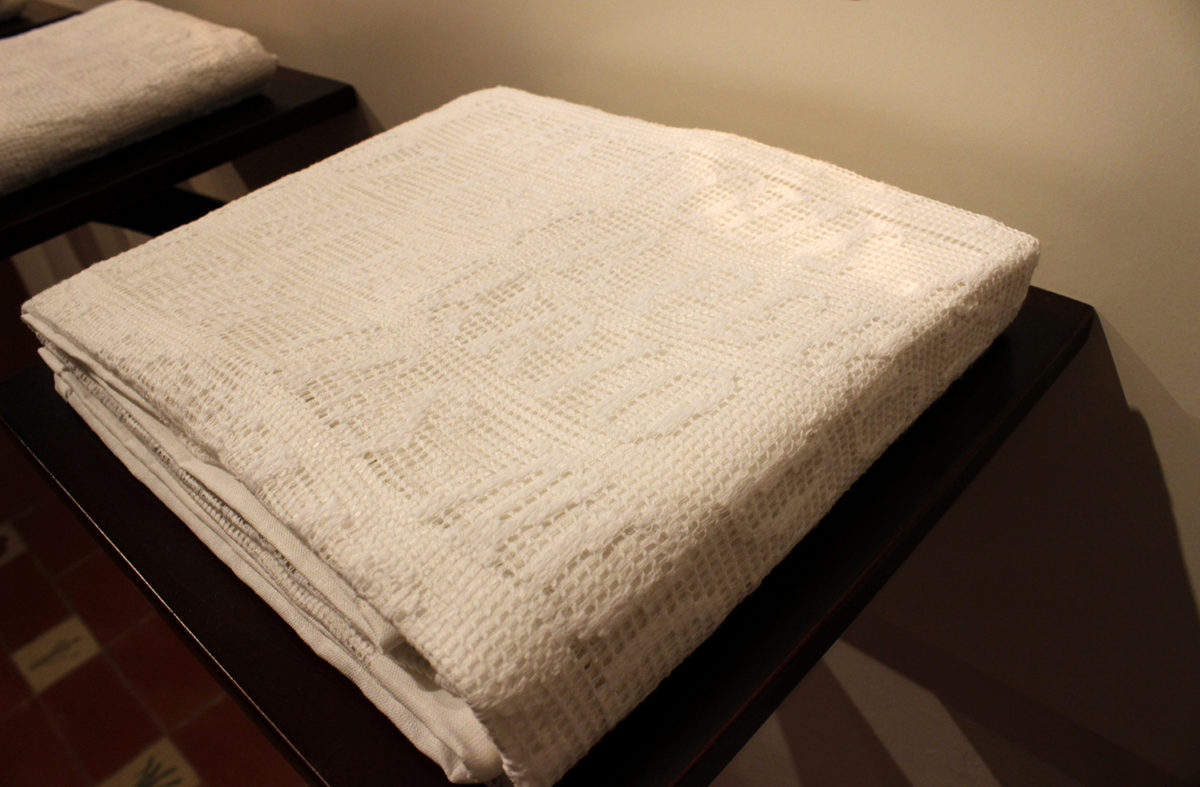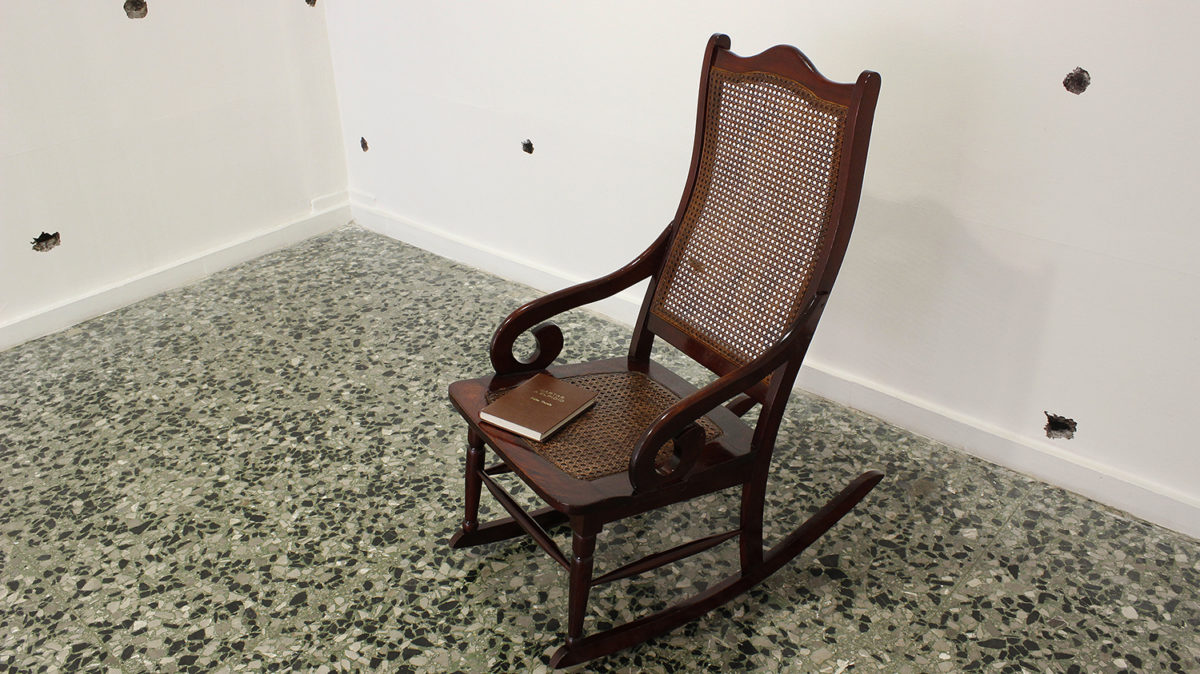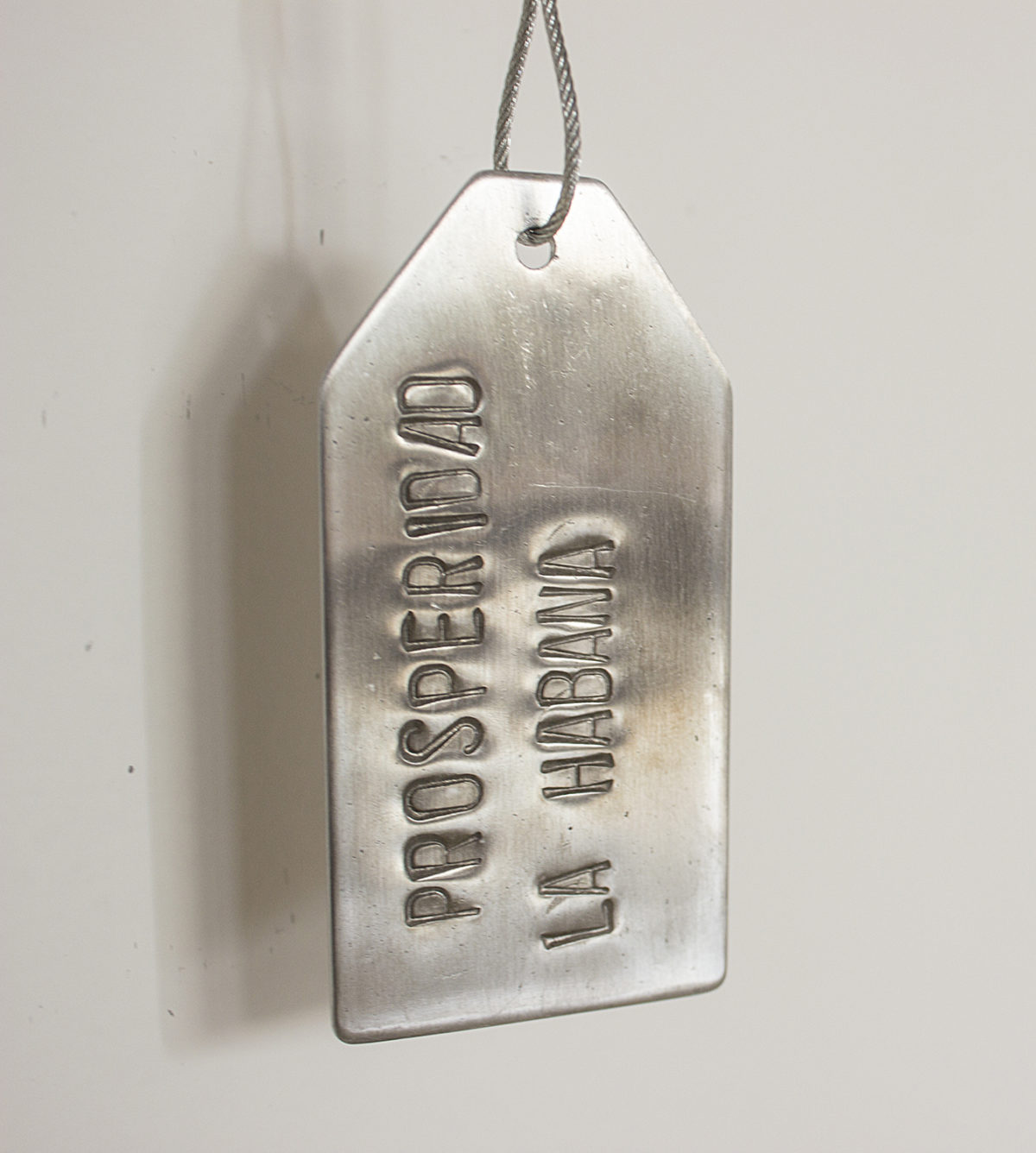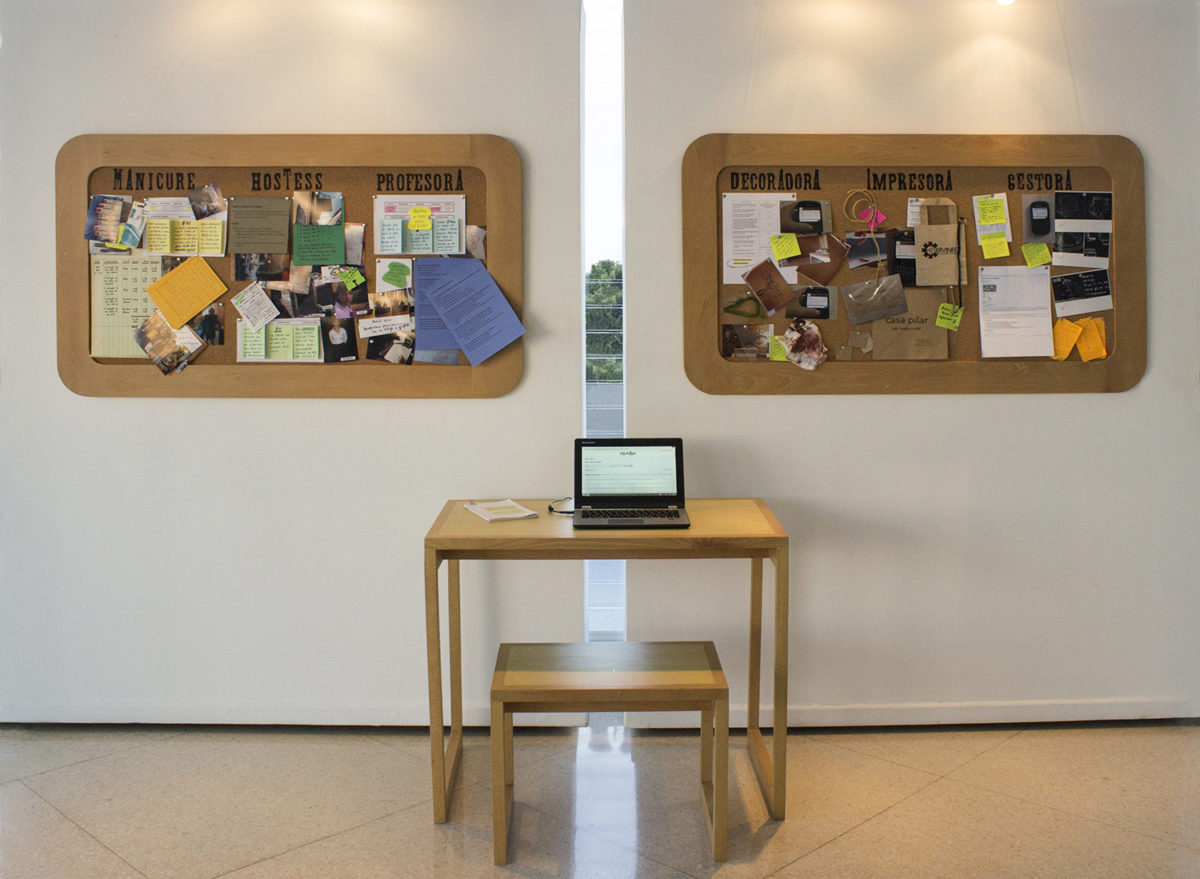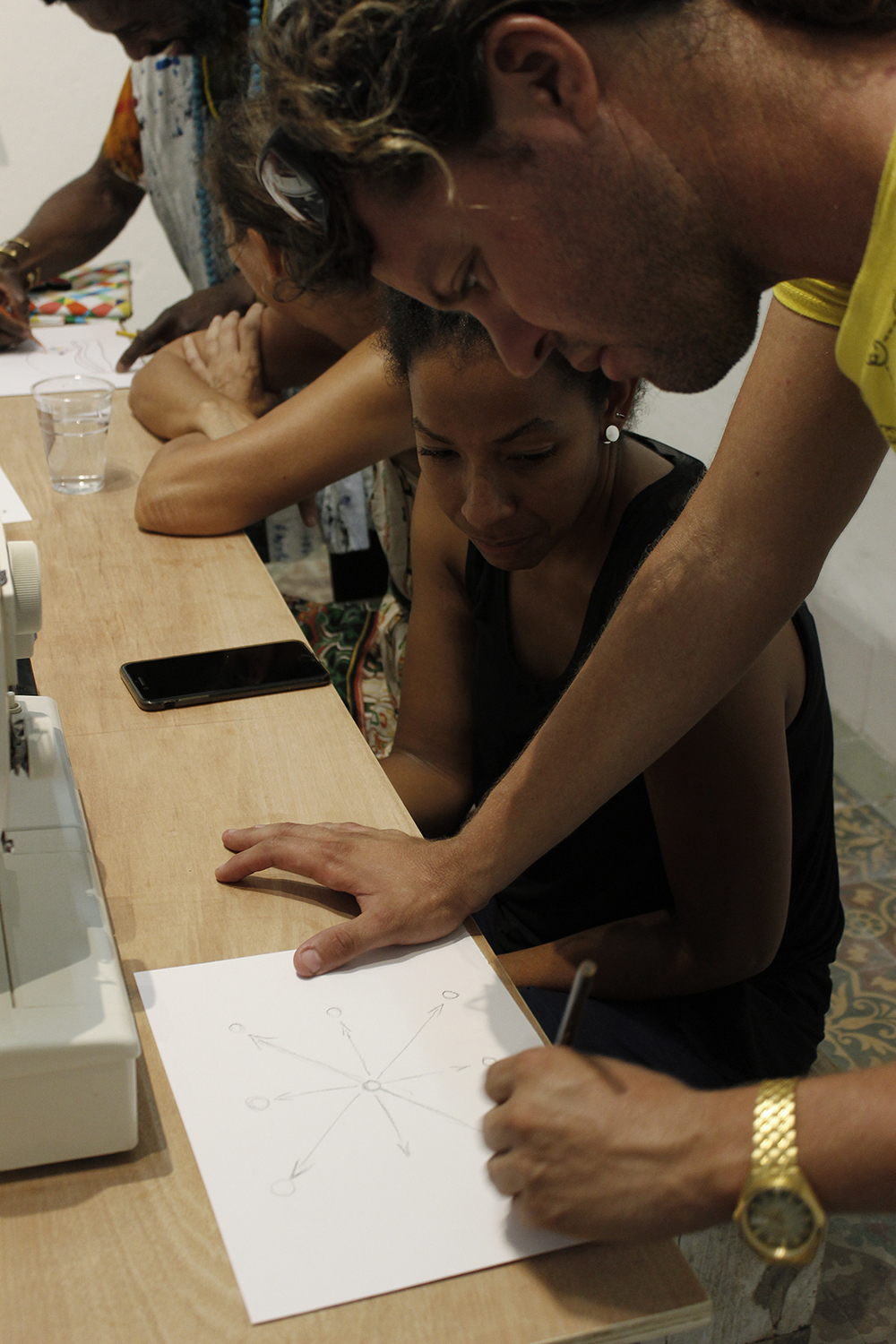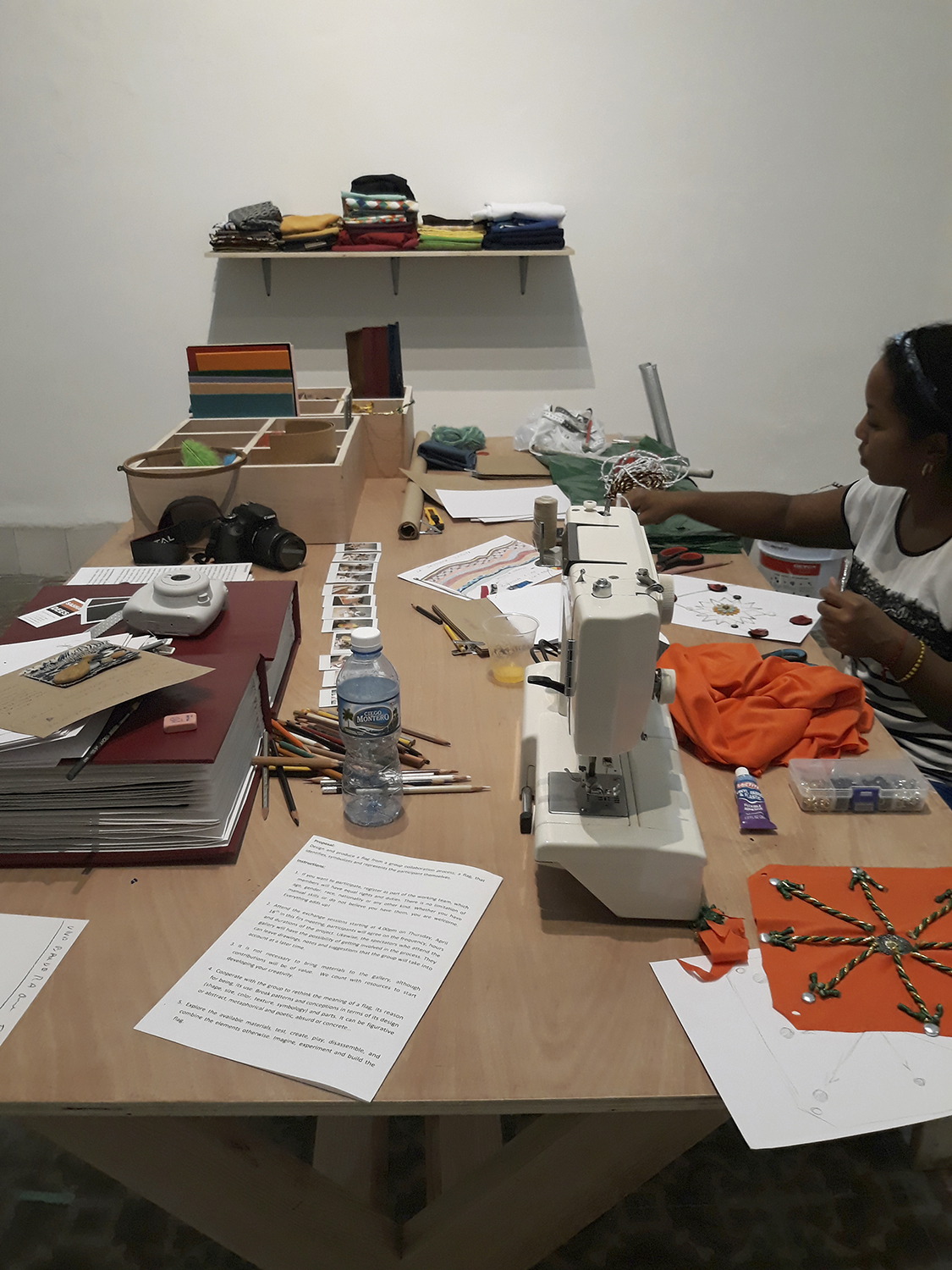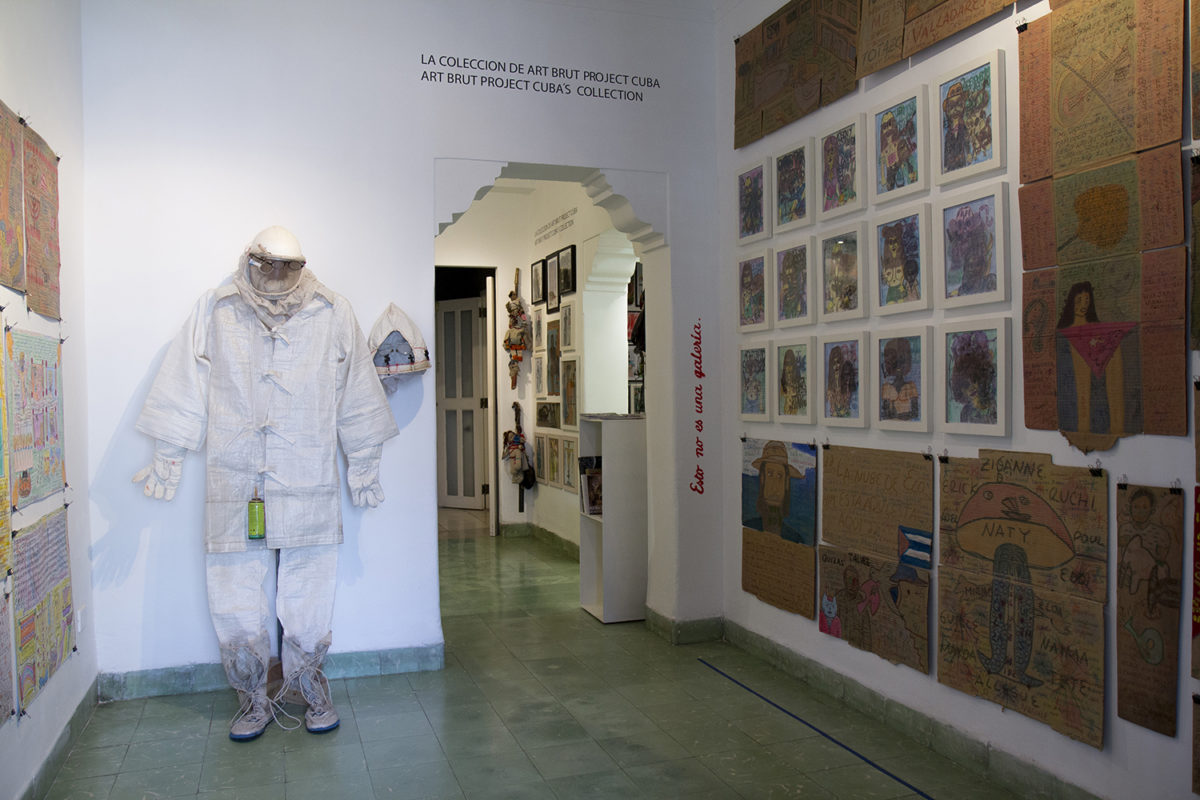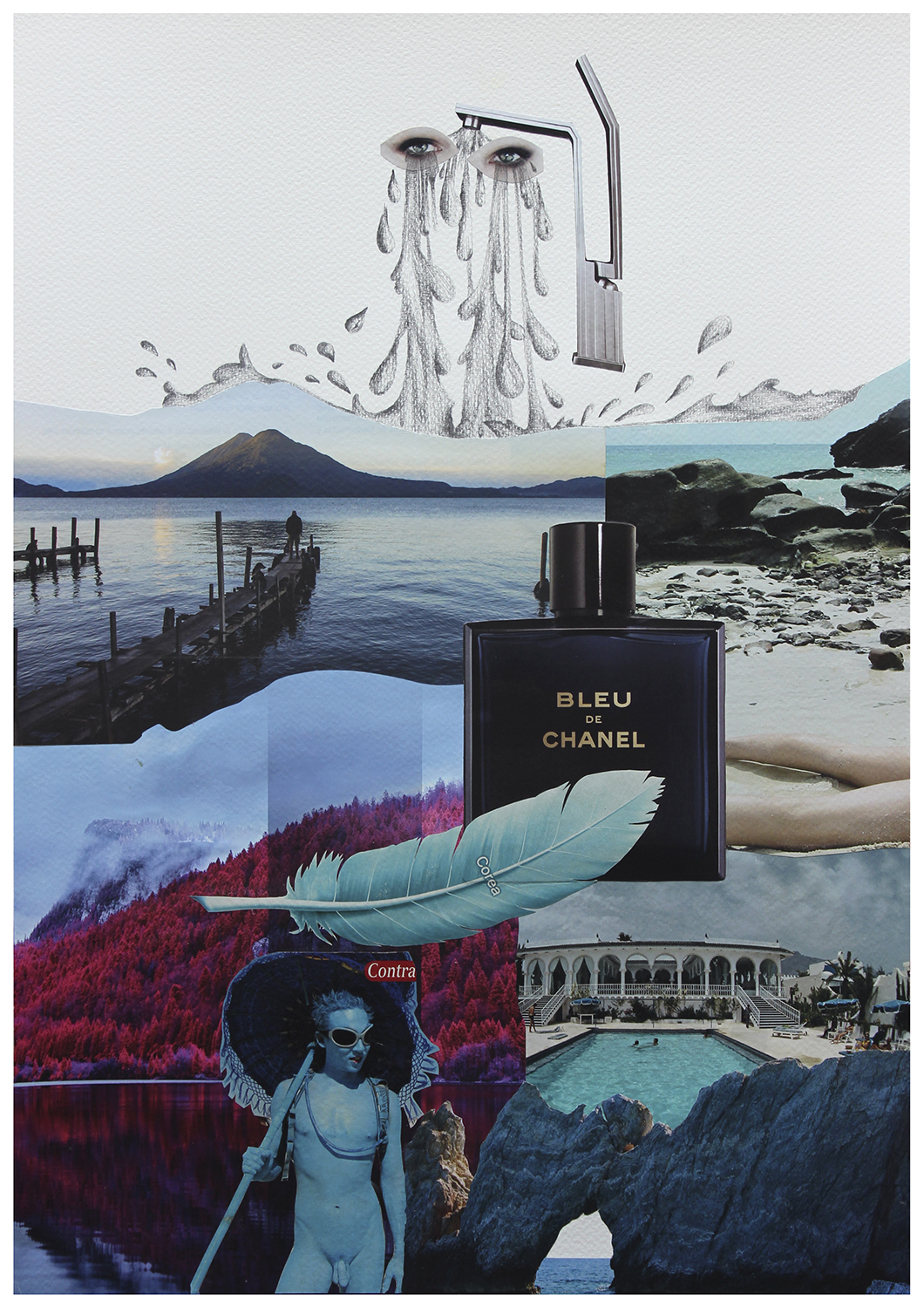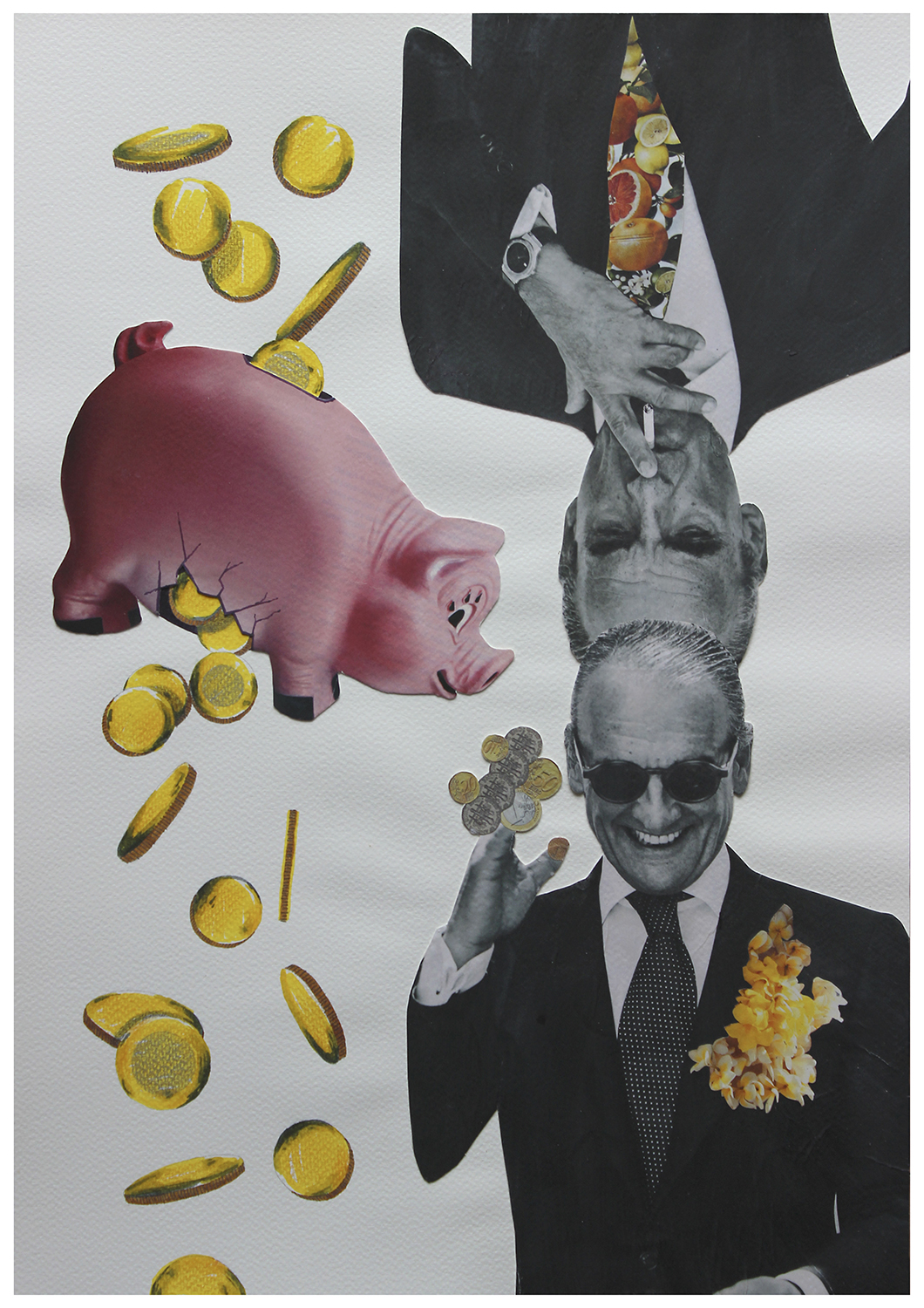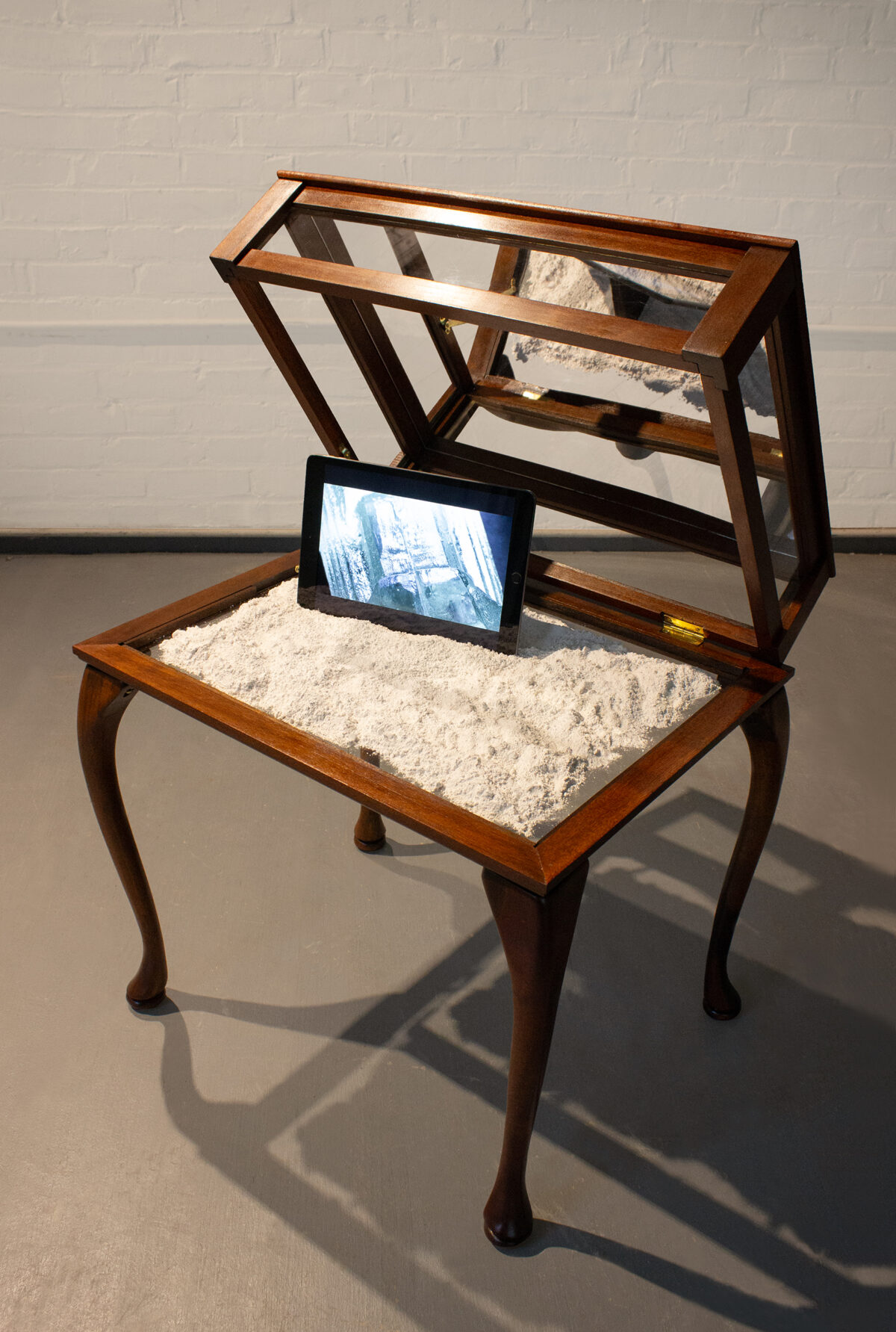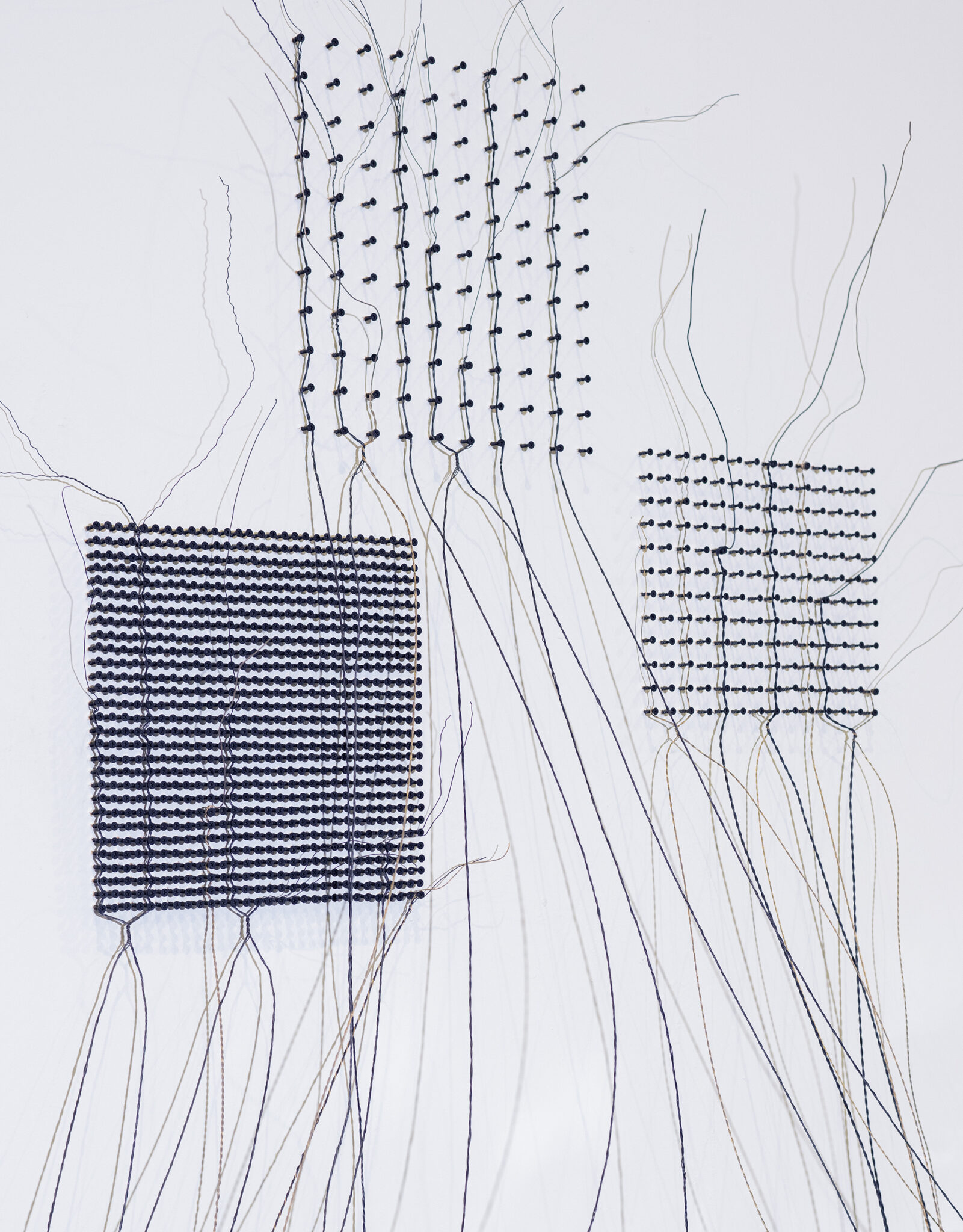Works
The Survey is an Insult
Media: Multimedia
Materials/Technique: Multimedia, laptop, base.
Dimensions: Variables.
Date: 2010.
Edition amount: 3
This work is the result of an opinion poll taken at the Central Park in Old Havana, which goal was to obtain specific data of people’s preferences about the selection of some words consider vulgar or foul in the Cuban context.
This piece takes as a starting point, language modifications and people’s reactions in front of awkward situations that threaten what is consider “morally correct”.
The information obtained trough the poll was statistically processed in order to create data charts representing the most popular word both for men and women, for example. In addition to that, photo documentation and other details were compiled in the multimedia.
Media: Multimedia
Materials/Technique: Multimedia, laptop, base.
Dimensions: Variables.
Date: 2010.
Edition amount: 3
This work is the result of an opinion poll taken at the Central Park in Old Havana, which goal was to obtain specific data of people’s preferences about the selection of some words consider vulgar or foul in the Cuban context.
This piece takes as a starting point, language modifications and people’s reactions in front of awkward situations that threaten what is consider “morally correct”.
The information obtained trough the poll was statistically processed in order to create data charts representing the most popular word both for men and women, for example. In addition to that, photo documentation and other details were compiled in the multimedia.
ÁN E Á UE T AM A
Media: Installation.
Materials/Technique: Tiles, wood, transparent acrylic, Rubik´s cube.
Dimensions: Variables.
Date: 2014
“ AN E A UE T AM A ” is an installation designed for an exhibition shown in the ruins of the Ballet Faculty (known as Circus Ruins) at the Arts University in Havana. The piece was supposed to integrate with the architecture, because of the similitude of the construction materials used to build it. It consisted of a podium or pedestal made of long thin bricks, on which there was an empty acrylic cube, like an exhibitor. Inside the exhibitor there was a broken up Rubik´s cube. In some of the cube´s little squares, the public could find loose black letters that established a correspondence with the artwork title letters. Only the interested and participatory spectator could decipher the apparently meaningless text, on Rubik´s cube, always from a certain distance, because he was not allowed to touch the object. This is a work which depends on the spectator´s presence or distance: its attitude. The interest around this art work revolves around related questions: how much time do we really devote to connect with artworks? How much disposition do we have to change reality from active participation?
Media: Installation.
Materials/Technique: Tiles, wood, transparent acrylic, Rubik´s cube.
Dimensions: Variables.
Date: 2014
“ AN E A UE T AM A ” is an installation designed for an exhibition shown in the ruins of the Ballet Faculty (known as Circus Ruins) at the Arts University in Havana. The piece was supposed to integrate with the architecture, because of the similitude of the construction materials used to build it. It consisted of a podium or pedestal made of long thin bricks, on which there was an empty acrylic cube, like an exhibitor. Inside the exhibitor there was a broken up Rubik´s cube. In some of the cube´s little squares, the public could find loose black letters that established a correspondence with the artwork title letters. Only the interested and participatory spectator could decipher the apparently meaningless text, on Rubik´s cube, always from a certain distance, because he was not allowed to touch the object. This is a work which depends on the spectator´s presence or distance: its attitude. The interest around this art work revolves around related questions: how much time do we really devote to connect with artworks? How much disposition do we have to change reality from active participation?
Decrescendo
Media: Installation.
Materials/Technique: Twelve unraveled and embroidered tablecloths, prints on copper, wooden table and shelves.
Dimensions: Variables.
Date: 2016
“Decrescendo” is a piece about the participation dynamics in contemporary Cuban society regarding matters of civic-political kind and about how consistent and active are, mainly the new generations, in expressing their ideals.
The work examines a specific event in Cuba’s history: when twelve women sang in 1868, for the first time in public, the La Bayamesa anthem, an anthem that had been prohibited and later became Cuba’s national anthem. The piece establishes a comparison between past and present. Twelve Cuban women sharing the same names of the original singers but living in present Cuba were contacted after a research done throughout the island, and interviewed on their aspirations, concerns, and political perceptions. Some excerpts of these interviews were embroidered on table cloths using craft traditional processes.
Media: Installation.
Materials/Technique: Twelve unraveled and embroidered tablecloths, prints on copper, wooden table and shelves.
Dimensions: Variables.
Date: 2016
“Decrescendo” is a piece about the participation dynamics in contemporary Cuban society regarding matters of civic-political kind and about how consistent and active are, mainly the new generations, in expressing their ideals.
The work examines a specific event in Cuba’s history: when twelve women sang in 1868, for the first time in public, the La Bayamesa anthem, an anthem that had been prohibited and later became Cuba’s national anthem. The piece establishes a comparison between past and present. Twelve Cuban women sharing the same names of the original singers but living in present Cuba were contacted after a research done throughout the island, and interviewed on their aspirations, concerns, and political perceptions. Some excerpts of these interviews were embroidered on table cloths using craft traditional processes.
Manifest on Carelessness
Media: Installation.
Materials/Technique: Printings on transparent self-adhesive vinyl, wooden rocking chair, book.
Dimensions: Variables.
Date: 2016.
The work was conceived from three intertwined dimensions, clung to a subjective historical interpretation: the thought (fostered by the book and its author), its concretion (armed action, depicted by specific images of bullet holes found at the Moncada Garrison, as a result of the armed struggle during the 50’s), and lastly, the contemplation (the simulated mark, the rest state that can be generated by the rocking chair, the book as a support of an extinct thought).
I am interested in thinking about the role of the subject in the political thinking and doing during moments of tension and crisis in Cuba.
Media: Installation.
Materials/Technique: Printings on transparent self-adhesive vinyl, wooden rocking chair, book.
Dimensions: Variables.
Date: 2016.
The work was conceived from three intertwined dimensions, clung to a subjective historical interpretation: the thought (fostered by the book and its author), its concretion (armed action, depicted by specific images of bullet holes found at the Moncada Garrison, as a result of the armed struggle during the 50’s), and lastly, the contemplation (the simulated mark, the rest state that can be generated by the rocking chair, the book as a support of an extinct thought).
I am interested in thinking about the role of the subject in the political thinking and doing during moments of tension and crisis in Cuba.
Exercise to Train the Indignation Muscle
Media: Action-object.
Materials/Technique: Artificial grass, garbage picked up in three towns named Prosperity, steel wire, engraved aluminum tag, Epoxy resin.
Dimensions: Variables.
Date: 2016
The piece started with the picking up of garbage in three Cuban villages which names are Prosperity. I traveled to these locations in order to collect garbage from public places, which was then mixed and pressed to conform three geometrical bodies, which format depended on the amount of trash picked up.
These resulting objects were covered with artificial grass, in a way that the spectator would never perceive their inner content, changing in this way a performative action into an abstract object. From each cube, there hanged a metal tag showing the location each one represents. The information regarding the inner content of the cubes was exclusively displayed in the show’s catalog and the data sheet, being these supplements the ones activating the meaning behind the action and the objects.
Tag contents: Prosperidad, La Habana; Prosperidad, Cienfuegos; Prosperidad, Santiago de Cuba.
Media: Action-object.
Materials/Technique: Artificial grass, garbage picked up in three towns named Prosperity, steel wire, engraved aluminum tag, Epoxy resin.
Dimensions: Variables.
Date: 2016
The piece started with the picking up of garbage in three Cuban villages which names are Prosperity. I traveled to these locations in order to collect garbage from public places, which was then mixed and pressed to conform three geometrical bodies, which format depended on the amount of trash picked up.
These resulting objects were covered with artificial grass, in a way that the spectator would never perceive their inner content, changing in this way a performative action into an abstract object. From each cube, there hanged a metal tag showing the location each one represents. The information regarding the inner content of the cubes was exclusively displayed in the show’s catalog and the data sheet, being these supplements the ones activating the meaning behind the action and the objects.
Tag contents:
Prosperidad, La Habana; Prosperidad, Cienfuegos; Prosperidad, Santiago de Cuba.
Expulsion from The Republic
Media: Installation-action.
Materials/Technique: Cork and wooden boards with information, laptop, website www.revolico.com, wooden table and bench.
Dimensions: Variables.
Date: 2014-2015.
The concern that origins this project is about the several ways to earn money that professional and non-professional people do to “make a living” in Cuban contemporary context. I attempt to make a reflection about artists´ insertion in the complex weaving of real relations of production, services and consumption.
In order to achieve this goal, I looked for real jobs for a period of approximately six months using the Employment section at www.revolico.com, a classified advertisement website. Through this site, I expressed my availability to perform different kinds of jobs, and offered the services that I was capable of doing outside of the art making. At the time I was performing the different jobs, I camouflaged my art project and my identity as an artist.
The resulting experience was shown in a gallery. There was a laptop placed on a desk showing the Employment section at that website, previously downloaded. In this way, the spectator could find not only the ads I had inserted but others uploaded by users of this website. The information hanged on the boards was related to the jobs for which I had been hired, including photographs, objects, data such as the money invested, the profits made, the inconvenience of working in those places, and so forth.
Media: Installation-action.
Materials/Technique: Cork and wooden boards with information, laptop, website www.revolico.com, wooden table and bench.
Dimensions: Variables.
Date: 2014-2015.
The concern that origins this project is about the several ways to earn money that professional and non-professional people do to “make a living” in Cuban contemporary context. I attempt to make a reflection about artists´ insertion in the complex weaving of real relations of production, services and consumption.
In order to achieve this goal, I looked for real jobs for a period of approximately six months using the Employment section at www.revolico.com, a classified advertisement website. Through this site, I expressed my availability to perform different kinds of jobs, and offered the services that I was capable of doing outside of the art making. At the time I was performing the different jobs, I camouflaged my art project and my identity as an artist.
The resulting experience was shown in a gallery. There was a laptop placed on a desk showing the Employment section at that website, previously downloaded. In this way, the spectator could find not only the ads I had inserted but others uploaded by users of this website. The information hanged on the boards was related to the jobs for which I had been hired, including photographs, objects, data such as the money invested, the profits made, the inconvenience of working in those places, and so forth.
Zoom
Media: Object-action/Photo documentation.
Materials/Technique: Digital printing on Epson paper.
Dimensions: 3 images of 50cm x 70cm each + text engraved in black acrylic of 21cm x 30cm.
Date: 2013
Edition amount: 5
This work is part of the Zoom Project, which emerged from the interaction between me and some people from different groups in their social contexts. The resulting experiences of this observation/relationship were turned into three multiple objects (Snowball Effect, Scattered Collection, and Epitome), which destiny was to be consumed in two different spaces: firstly as a whole at the gallery, and then, in the city as individual pieces worn by people.
The results of the whole process is only a photo documentation of one object of each one of the three works. The insertion of the objects in specific social contexts and the use of them by people, has the intention to favor that they work actively not only in selected and legitimized art contexts.
Artworks from the project:
“Snowball effect”.
Object-action.
150 snowballs. Glass, ceramic, ethylene glycol, cork, wood, PVC.
“Scattered collection”
Object-action.
20 gold 9k bracelets, silver 925, black leather.
“Epitome”
Object-action.
Five book edition, handbound. Cardboard, bond paper, onion skin paper.
Media: Object-action/Photo documentation.
Materials/Technique: Digital printing on Epson paper.
Dimensions: 3 images of 50cm x 70cm each + text engraved in black acrylic of 21cm x 30cm.
Date: 2013
Edition amount: 5
This work is part of the Zoom Project, which emerged from the interaction between me and some people from different groups in their social contexts. The resulting experiences of this observation/relationship were turned into three multiple objects (Snowball Effect, Scattered Collection, and Epitome), which destiny was to be consumed in two different spaces: firstly as a whole at the gallery, and then, in the city as individual pieces worn by people.
The results of the whole process is only a photo documentation of one object of each one of the three works. The insertion of the objects in specific social contexts and the use of them by people, has the intention to favor that they work actively not only in selected and legitimized art contexts.
Artworks from the project:
“Snowball effect”.
Object-action.
150 snowballs. Glass, ceramic, ethylene glycol, cork, wood, PVC.
“Scattered collection”
Object-action.
20 gold 9k bracelets, silver 925, black leather.
“Epitome”
Object-action.
Five book edition, handbound. Cardboard, bond paper, onion skin paper.
Saturn Devouring His Son
Media: Installation.
Materials/Technique: Modified magazines covers, transparent acrylic.
Dimensions: Variables.
Date: 2019
Action on the covers of the leftist magazine “Critical Thinking” , published in Cuba from 1967 to 1971, the year when the Communist government censored it, citing divergence. I destroyed the title on the covers and then reconstructed it through traditional paper restoration methods—cleaning, relining, paper grafting, and color restoration.
This sort of illogical procedure aims to highlight how authoritarianism handles its creations and what at some point becomes uncomfortable for the system. The act of caring and repairing adds an extra layer of content that positions the individual in the conversation.
Media: Installation.
Materials/Technique: Intervened magazines covers, transparent acrylic.
Dimensions: Variables.
Date: 2019
The piece is the result of an action on the covers of “Critical Thinking” magazine, published in Cuba from 1967 to 1971, year when it was censored by the government, under the allegation of being divergent. My action consisted of destroying the part of the magazine covers containing the title, and then reconstructing them using the traditional paper restoration process: cleaning, relining and paper grafting, and color restoration. The purpose of this somewhat illogical procedure is to talk about the way authoritarianism manages its own creations and what becomes uncomfortable for it at some point. The act of caring and repairing adds an extra layer of content that positions the individual in the conversation.
Untitled
Media: Workshop-installation.
Materials/Technique: Wooden table and shelf, fabrics and other materials to produce the flag, documenting pictures and sketches.
Dimensions: Variables.
Date: 2019
Through an open call, this project involved a diverse group collaboratively creating a flag. The project aimed to foster a democratic space for genuine group collaboration, addressing the Cuban context, which increasingly lacks such cooperation. The creation of a flag aimed to question concepts of re-foundation, renewal, and representativeness, exploring collective identity and expression.
Participants, regardless of gender, age, or nationality, joined a working team to collectively design and produce a flag that authentically represented its creators. Materials were provided, with room for collaborators to bring additional ones based on their interests.
The collaboration aimed to redefine traditional flag concepts, exploring size, color, texture, symbology, and more. The group also agreed on rituals for the flag, such as the hoisting, folding and incinerating ceremonies. After several weeks of discussion, sketching, and working, they decided that any flag would not represent them as they were questioning the effectiveness of that symbol itself. They resolved painting a statement on the gallery walls instead. Leftover materials and documentary photographs were displayed at the gallery as well.
Media: Workshop-installation.
Materials/Technique: Wooden table and shelf, fabrics and other materials to produce the flag, documenting pictures and sketches.
Dimensions: Variables.
Date: 2019
Through an open call, this project involved a diverse group collaboratively creating a flag. The project aimed to foster a democratic space for genuine group collaboration, addressing the Cuban context, which increasingly lacks such cooperation. The creation of a flag aimed to question concepts of re-foundation, renewal, and representativeness, exploring collective identity and expression.
Participants, regardless of gender, age, or nationality, joined a working team to collectively design and produce a flag that authentically represented its creators. Materials were provided, with room for collaborators to bring additional ones based on their interests.
The collaboration aimed to redefine traditional flag concepts, exploring size, color, texture, symbology, and more. The group also agreed on rituals for the flag, such as the hoisting, folding and incinerating ceremonies. After several weeks of discussion, sketching, and working, they decided that any flag would not represent them as they were questioning the effectiveness of that symbol itself. They resolved painting a statement on the gallery walls instead. Leftover materials and documentary photographs were displayed at the gallery as well.
Souvenir
Media: Installation.
Materials/Technique: 5 bags cross-stitch manually embroidered.
Dimensions: Variables.
Date: 2019.
This work is composed of five hand-woven bags made by Chiapas’ indigenous artisans, which have been cross-stitched embroidered with images that represent socio-political and environmental conflicts present in the Mexican island of Holbox. These problems constitute dilemmas for the community, and function in a very underlying way, without affecting tourists visiting the island, who are provided with an ephemeral experience of happiness and well-being.
I take the idea of a souvenir and what this concept means, to question the way we interact with a specific place, what we leave and what we take, carry or move –metaphorically speaking-, from places where we don’t establish a deep connection in terms of a more permanent living, everyday life, and experience.
Media: Installation.
Materials/Technique: 5 bags cross-stitch manually embroidered.
Dimensions: Variables.
Date: 2019.
This work is composed of five hand-woven bags made by Chiapas’ indigenous artisans, which have been cross-stitched embroidered with images that represent socio-political and environmental conflicts present in the Mexican island of Holbox. These problems constitute dilemmas for the community, and function in a very underlying way, without affecting tourists visiting the island, who are provided with an ephemeral experience of happiness and well-being.
I take the idea of a souvenir and what this concept means, to question the way we interact with a specific place, what we leave and what we take, carry or move –metaphorically speaking-, from places where we don’t establish a deep connection in terms of a more permanent living, everyday life, and experience.
Ceiling
Media: Photographic installation.
Materials/Technique: Digital print on cotton paper.
Dimensions: 50cm x 70cm each.
Date: 2017.
Edition amount: 5
These photographs document a graffiti with the text THIS IS NOT A GALLERY, which I made in all the independent art spaces existing in Havana on the date of the work, after a negotiation with their managers —except four of them—. I appropriate the typography of the work “The Treachery of Images” by Magritte, to propose a debate on the real definition and functioning of this type of site in Cuba.
I am interested in proposing a reflection on the legal situation of private art spaces and their managers in the country. I am based on two contradictory factors: on the one hand, the absence of a legislative framework that protects these places and the people who work in them; and on the other, the permissibility or condescension that exists from the institution towards them. The work is positioned in this strip or gap of illegality-legality and intolerance-tolerance.
Media: Photographic installation.
Materials/Technique: Digital print on cotton paper.
Dimensions: 50cm x 70cm each.
Date: 2017.
Edition amount: 5
These photographs document a graffiti with the text THIS IS NOT A GALLERY, which I made in all the independent art spaces existing in Havana on the date of the work, after a negotiation with their managers —except four of them—. I appropriate the typography of the work “The Treachery of Images” by Magritte, to propose a debate on the real definition and functioning of this type of site in Cuba.
I am interested in proposing a reflection on the legal situation of private art spaces and their managers in the country. I am based on two contradictory factors: on the one hand, the absence of a legislative framework that protects these places and the people who work in them; and on the other, the permissibility or condescension that exists from the institution towards them. The work is positioned in this strip or gap of illegality-legality and intolerance-tolerance.
Estiqui
Media: Mixed Media.
Materials/Technique: Collage, drawing.
Dimensions: Variable.
Date: 2020
Estiqui is a series of collages that interpret contents found on car bumper stickers. The project was born out of an exchange of photographs between the artist Gabriel Sosa and myself, taken during our daily commutes in our respective cities -Boston and Havana. We started documenting and exchanging these mobile messages, and from there I began to explore the unique characteristics of these texts and images on car bodies, and the persistent relevance of printed text in the virtual age
I am interested in drawing attention to the topics that the messages convey and the completely different way in which communication works with respect to what is permissible and accepted by power in different public spaces, therefore the political/apolitical nature of the communicative act.
Media: Mixed media.
Materials/Technique: Collages, drawing.
Dimensions: Variable.
Date: 2020
Estiqui is a series of collages that interpret contents found on car bumper stickers. The project was born out of an exchange of photographs between the artist Gabriel Sosa and myself, taken during our daily commutes in our respective cities -Boston and Havana. We started documenting and exchanging these mobile messages, and from there I began to explore the unique characteristics of these texts and images on car bodies, and the persistent relevance of printed text in the virtual age
I am interested in drawing attention to the topics that the messages convey and the completely different way in which communication works with respect to what is permissible and accepted by power in different public spaces, therefore the political/apolitical nature of the communicative act.
11J or the Revolution that Never Happened
Media: Sound installation.
Materials/Technique: 11 engraved acrylics, record player, sound, table, paper, light bulb.
Dimensions: Variable
Date: 2021
Version: 1
This project considers some concerns I have about the use of censorship as a method of coercion and eradication of the exercise of freedom. I want to reflect not only on censorship as an abstract phenomenon but on its concrete expression in the material world.
I was inspired by the “Banned Records” in South Africa during Apartheid, when the government literally scratched vinyl records with the intention of damaging them and eliminating certain songs and musicians that were considered to be controversial in order to maintain the political status quo.
I anchor these insights in a series of popular uprisings that have taken place in Cuba, my country of origin, particularly the spontaneous protest occurring on July 11, 2021; when people went to the streets en masse to protest against the government for the first time since the beginning of the Revolution in 1959.
My purpose is for the audience to interact with the work by indistinctly playing the images on the record player.
Media: Sound installation.
Materials/Technique: 11 engraved acrylics, record player, sound, table, paper, light bulb.
Dimensions: Variable
Date: 2021
Version: 1
This project considers some concerns I have about the use of censorship as a method of coercion and eradication of the exercise of freedom. I want to reflect not only on censorship as an abstract phenomenon but on its concrete expression in the material world.
I was inspired by the “Banned Records” in South Africa during Apartheid, when the government literally scratched vinyl records with the intention of damaging them and eliminating certain songs and musicians that were considered to be controversial in order to maintain the political status quo.
I anchor these insights in a series of popular uprisings that have taken place in Cuba, my country of origin, particularly the spontaneous protest occurring on July 11, 2021; when people went to the streets en masse to protest against the government for the first time since the beginning of the Revolution in 1959.
My purpose is for the audience to interact with the work by indistinctly playing the images on the record player.
Complicity
Media: Sculpture
Materials/Technique: Sandblasted glass, steel chain, cloth ribbon
Dimensions: Variable
Date: 2021
This object connects with concerns I have about political prison and the application of power in Cuba nowadays. I am interested in thinking about the relationship between the captive subject and the one that keeps him under this state, or between the victim and his aggressor, through the meanings arising from the materials used in the work.
Media: Sculpture
Materials/Technique: Sandblasted glass, steel chain, cloth ribbon
Dimensions: Variable
Date: 2021
This object connects with concerns I have about political prison and the application of power in Cuba nowadays. I am interested in thinking about the relationship between the captive subject and the one that keeps him under this state, or between the victim and his aggressor, through the meanings arising from the materials used in the work.
Versus
Media: Installation-action
Materials/Technique: Handmade candy, glass containers, wooden shelf, wallpaper.
Dimensions: 10ft. x 5ft. x 1ft.
Date: 2022
A few hundred handmade bullet-shaped candy are offered to the audience in several glass containers. These are placed on a wooden shelf covered with a wallpaper collage. The participatory aspect of the work proposes a space for thinking about what the action of eating the bullet-shaped candy or not implies about people as members of society regarding violence perception, violence sensitivity, political tensions, and polarization.
Media: Installation-action
Materials/Technique: Handmade candy, glass containers, wooden shelf, wallpaper.
Dimensions: 10ft. x 5ft. x 1ft.
Date: 2022
A few hundred handmade bullet-shaped candy are offered to the audience in several glass containers. These are placed on a wooden shelf covered with a wallpaper collage. The participatory aspect of the work proposes a space for thinking about what the action of eating the bullet-shaped candy or not implies about people as members of society regarding violence perception, violence sensitivity, political tensions, and polarization.
Tautology
Media: Installation-action
Materials/Technique: Glass powder, screen, sound, wooden furniture, mirror.
Dimensions/Duration: Variable / Video loop (5.04 min)
Date: 2022
Two hands interact on video with a casted glass gun. Sound of glass crushing starts once the image transitions to a white screen.
The work incorporates elements of redundancy, iteration, cycle, and intentional ambiguity. Rather than using the real object, I make a representation of it, subsequently destroying it to transform it into layers of abstraction and pure material. I am aiming to connect those layers of content with other culturally associated images and symbols of violence.
The piece extends my ongoing exploration of this theme, not only through the objects employed but also in the making processes themselves.
Media: Installation-action
Materials/Technique: Glass powder, screen, sound, wooden furniture, mirror.
Dimensions/Duration: Variable/Video loop (5.04min)
Date: 2022
Two hands interact on video with a casted glass gun. Sound of glass crushing starts once the image transitions to a white screen.
The work incorporates elements of redundancy, iteration, cycle, and intentional ambiguity. Rather than using the real object, I make a representation of it, subsequently destroying it to transform it into layers of abstraction and pure material. I am aiming to connect those layers of content with other culturally associated images and symbols of violence.
The piece extends my ongoing exploration of this theme, not only through the objects employed but also in the making processes themselves.
Disobeying
Media: Installation.
Materials/Technique: Hand-
Dimensions: Variable.
Date: 2023
I perceive fences as both actual and symbolic barriers, as imposed borders in public space, but also as fragile and permeable elements that can be transcended.
I use rigid structures on the wall to hand-weave pieces of fences that are then deconstructed, melted, and distorted with molten glass. The resulting pieces are placed on an asphalt platform, resembling a flowing liquid.
The craft and effort involved in creating an object like pieces of fence, usually produced industrially, has great meaning to me in terms of resistance. My body involved in that labor and the time dedicated to making the work, align with ideas of struggle I want to convey with my project.
Media: Installation.
Materials/Technique: Hand-
Dimensions: Variable.
Date: 2023
I perceive fences as both actual and symbolic barriers, as imposed borders in public space, but also as fragile and permeable elements that can be transcended.
I use rigid structures on the wall to hand-weave pieces of fences that are then deconstructed, melted, and distorted with molten glass. The resulting pieces are placed on an asphalt platform, resembling a flowing liquid.
The craft and effort involved in creating an object like pieces of fence, usually produced industrially, has great meaning to me in terms of resistance. My body involved in that labor and the time dedicated to making the work, align with ideas of struggle I want to convey with my project.
11J or The Revolution that Never Happened (Second Iteration)
Media: Participatory sound-installation.
Materials/Technique: Engraved vinyl records, sleeves, acrylic display, record player, sound.
Dimensions: Variable.
Date: 2023
Edition amount: 3
Engraved on eleven vinyls, images of protest are presented to the audience to be played on a record player. These vinyls have been previously recorded with a piano version of ‘La Bayamesa’, performed by the censored and exiled Cuban musician Bebo Valdés. I aim to invite audience interaction, proposing a unique moment of overlapping noise.
Additionally, the work incorporates the names of over 1000 individuals who were arrested and imprisoned in Cuba, after the mass protest on July 11, 2021.
Media: Participatory sound-installation.
Materials/Technique: Engraved vinyl records, sleeves, acrylic display, record player, sound.
Dimensions: Variable.
Date: 2023
Edition amount: 3
Engraved on eleven vinyls, images of protest are presented to the audience to be played on a record player. These vinyls have been previously recorded with a piano version of ‘La Bayamesa’, performed by the censored and exiled Cuban musician Bebo Valdés. I aim to invite audience interaction, proposing a unique moment of overlapping noise.
Additionally, the work incorporates the names of over 1000 individuals who were arrested and imprisoned in Cuba, after the mass protest on July 11, 2021.
Meditations on Fear
Media: Sound installation.
Materials/Technique: 8′ x 8′ steel fence hand woven and unwoven by the artist, screws, inkjet prints with archival pigment ink, sound.
Dimensions: Variable.
Sound run time: 2 min
Sound design: Sheyla Pool
Date: 2024
I use a rigid structure of screws on the wall to hand-weave a steel wire chain-link fence approximately 8′ x 8′ in size. Once the fence is finished, I unweave it completely. The entire making process is consistently documented through photography sessions, from which a curated selection of five images is exhibited alongside the remnant wire—bearing all the bends and weaving marks. This display is accompanied by a soundtrack played through a sound cone, featuring recordings of the sounds of labor interwoven with my voice articulating repetitive action verbs related to both the construction of the fence and the theme of censorship.
The work invites viewers to contemplate the tension between conformity and individual expression, particularly amidst the current political climate, where struggles over what is permissible or acceptable to say—both in language itself and in the content of speech—intensify. Beneath the apparent absurdity of the fence’s transient existence, the performative moments spent weaving serve as opportunities for critical reflection and meditation, prompting questions about refusal, dissent, and unlearning.
Media: Sound installation.
Materials/Technique: 8′ x 8′ steel fence hand woven and unwoven by the artist, screws, inkjet prints with archival pigment ink, sound.
Dimensions: Variable.
Sound run time: 2 min
Sound design: Sheyla Pool
Date: 2024
I use a rigid structure of screws on the wall to hand-weave a steel wire chain-link fence approximately 8′ x 8′ in size. Once the fence is finished, I unweave it completely. The entire making process is consistently documented through photography sessions, from which a curated selection of five images is exhibited alongside the remnant wire—bearing all the bends and weaving marks. This display is accompanied by a soundtrack played through a sound cone, featuring recordings of the sounds of labor interwoven with my voice articulating repetitive action verbs related to both the construction of the fence and the theme of censorship.
The work invites viewers to contemplate the tension between conformity and individual expression, particularly amidst the current political climate, where struggles over what is permissible or acceptable to say—both in language itself and in the content of speech—intensify. Beneath the apparent absurdity of the fence’s transient existence, the performative moments spent weaving serve as opportunities for critical reflection and meditation, prompting questions about refusal, dissent, and unlearning.




